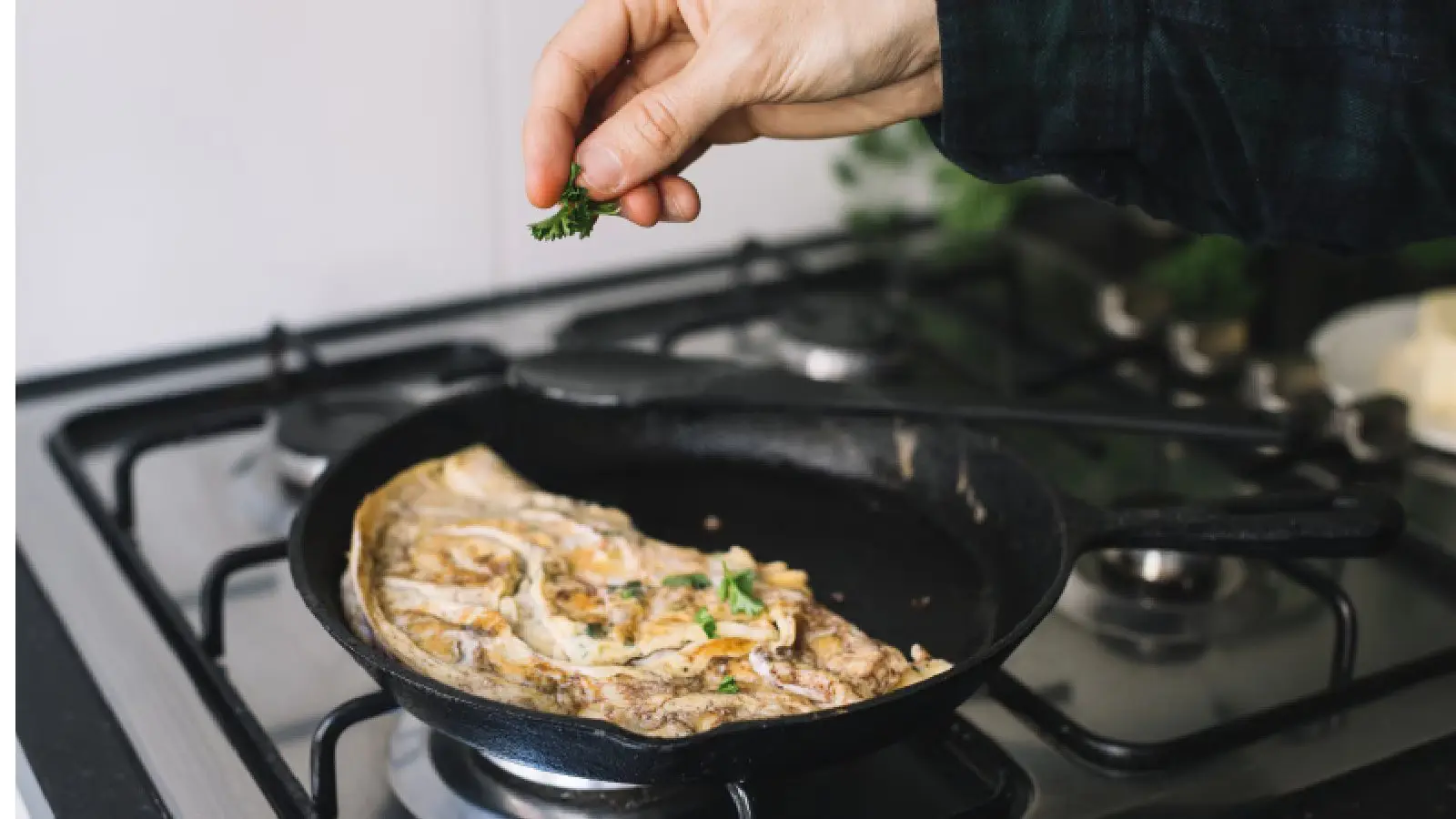From the olden days, we have heard and learned that cooking in earthen pottery, brass utensils, etc was good for health. Even in some households, iron utensils were also used, which had many health benefits. However, over time, with technological advancements, our eating habits changed along with our utensils. Nowadays, most families use aluminum utensils for cooking, and those who are health-conscious choose Teflon-coated utensils, famously known as non-stick utensils.
I believe every house today uses Teflon-coated utensils since they help to cook food with little or no oil contents; very few people, however, do realize that these Teflon-coated utensils can be harmful to our health. They can cause many serious health issues, including “Teflon flu”. Teflon flu, sometimes also called polymer fume fever, is a condition in which humans fall ill because of exposure to fumes from pans treated with PTFE, according to the National Capital Poison Center, US. This happens when a pan has been on a burner too long and has either gotten too hot or run dry, thus emitting minute airborne particles that can be inhaled and contain metallic oxides, reports the Missouri Poison Center. Those suffering from Teflon flu may experience symptoms that run a gamut from fever and chills to headache, feeling weak, and overall muscle aches, along with a dry cough. Essentially it can make you feel as though you have the flu, but it is caused by your cookware.
Data indicate that US poison centers have received over 3,600 reports of probable cases of polymer fume fever, a flu-like disease associated with a chemical coating found on some nonstick cookware, during the past 20 years. The illness has been called “Teflon flu” after the trademarked name of the popular nonstick coating, according to a report from The Washington Post. Indeed, America’s Poison Centers, a nonprofit, reports that 267 cases were reported last year-allegedly one of the highest reported totals since the year 2000.
Unknown to many, Polytetrafluoroethylene-the ingredient in Teflon and many other nonstick cookware sets a member of the class of chemicals known as PFAS (per- and poly-fluoroalkyl substances), better known as “forever chemicals” for their tendency to persist in the environment for thousands or even hundreds of years. If a non-stick utensil is then heated above 500 degrees Fahrenheit, the coating can break down and release fumes that contribute to “Teflon flu.” According to Zachary Hudson, an associate professor of chemistry at the University of British Columbia, the outlet reports, “It’ll burn and release a very complex mix of oxidized, fluorinated substances. This is why they tell you: Don’t heat your Teflon pan to a high temperature.”
Scientists measured the PFAS emissions in a German study during the heating of empty non-stick pans for half an hour. The highest emissions recorded were found in the pan that had reached the highest temperature of about 698 degrees Fahrenheit. “There is no risk to human health at normal application temperatures,” the researchers wrote in their findings. The US Food and Drug Administration isn’t aware of any studies that show PFAS used in nonstick pans “presents a safety concern for consumers,” according to a spokesman for the agency, as cited by The Washington Post. The representative said that FDA scientists carefully research all materials used in “food contact products.”
Experts say it is not recommended to preheat non-stick cookware and regular ways of cooking use medium to low heat and would not reach extreme temperatures that would off-gas harmful fumes. However, some cases of people who leave a heated non-stick pan unattended have been shown to cause polymer fume fever. They also should create good ventilation by using exhaust fans or opening windows when they cook. Experts also recommend not to use stainless steel or any other metal utensils scrubbing against the bottom of a nonstick pan and to keep your scratched pans out of commission. An Australian study exposed that a single scratch in a pan coated with Teflon can yield more than a thousand particles. If the pan shows signs of scratching, peeling, or flaking it is supposed to be discarded since PFAS can stay in the human body and cause several health risks, including kidney and testicular cancers
One should know everything about Teflon cooking utensils before buying them. Many are attracted to Teflon due to the non-stick qualities associated with it which has made the cooking utensils easier and more comfortable to use and clean. However, perfluorooctanoic acid, more commonly known as PFOA, is a former component in Teflon that has raised safety concerns. PFOA has been linked to many health diseases and disorders, such as cancer and immune system disorders. The use of PFOA was utilized to make Teflon in the United States until about 2014 and in Europe until 2008. Even though the use of PFOA was phased out into production, cookware manufactured before 2013 may still contain the chemical.
Knowing all this about Teflon-coated utensils, anyone willing to use them should recourse to nonstick cookware at low to medium heat to avoid Teflon flu. Keeping the surface temperature below 450 degrees Fahrenheit can prevent harmful fumes from being released. However, one should consider alternatives for cooking utensils since it is a matter of health and life. Better still is ceramic cookware, which has recently become popular as a natural nonstick choice. Cast iron is another when seasoned and cared for properly; it develops a nonstick surface over time. Others like carbon steel, which is lighter and more readily available than cast iron.
As Indians, we should follow our traditional utensils to keep ourselves healthy and fit. Using brass utensils helps retain heat, ensuring that the food stays warm for a longer time. Traditional Indian utensils are often made from natural materials like clay, brass, and copper, making them eco-friendly and sustainable alternatives to modern cookware. One should be cautious while choosing utensils for cooking, knowing which materials are good for cooking and health.
Choosing traditional cookware not only keeps the food taste clean and pure but also offers numerous health benefits. Returning to the roots in the kitchen is the best option. It’s time to act smart while choosing cookware for cooking and to make yourself and others aware of Teflon flu and its harmful effects on human health and the environment.
Being an Indian is fortunate as we have rich cultural and traditional knowledge of food and cooking utensils. However, with modernization, we have forgotten our roots, leading to increased sickness. It’s essential to change our mindset, accept who we are, and follow the path suggested by our ancestors.
Dr. Pyali Chatterjee, HOD, Assistant Professor, Faculty of Law, ICFAI University, Raipur, Chhattisgarh










